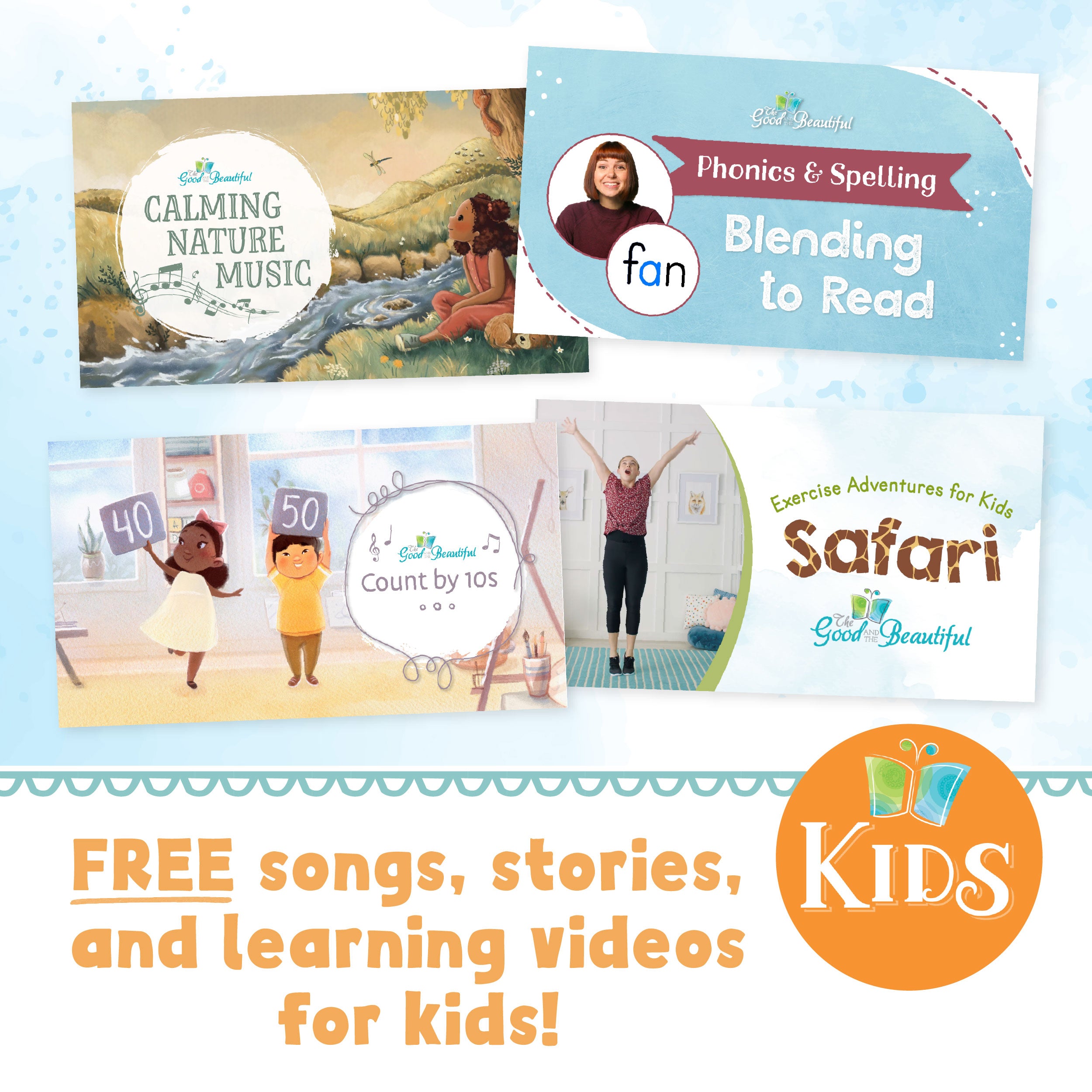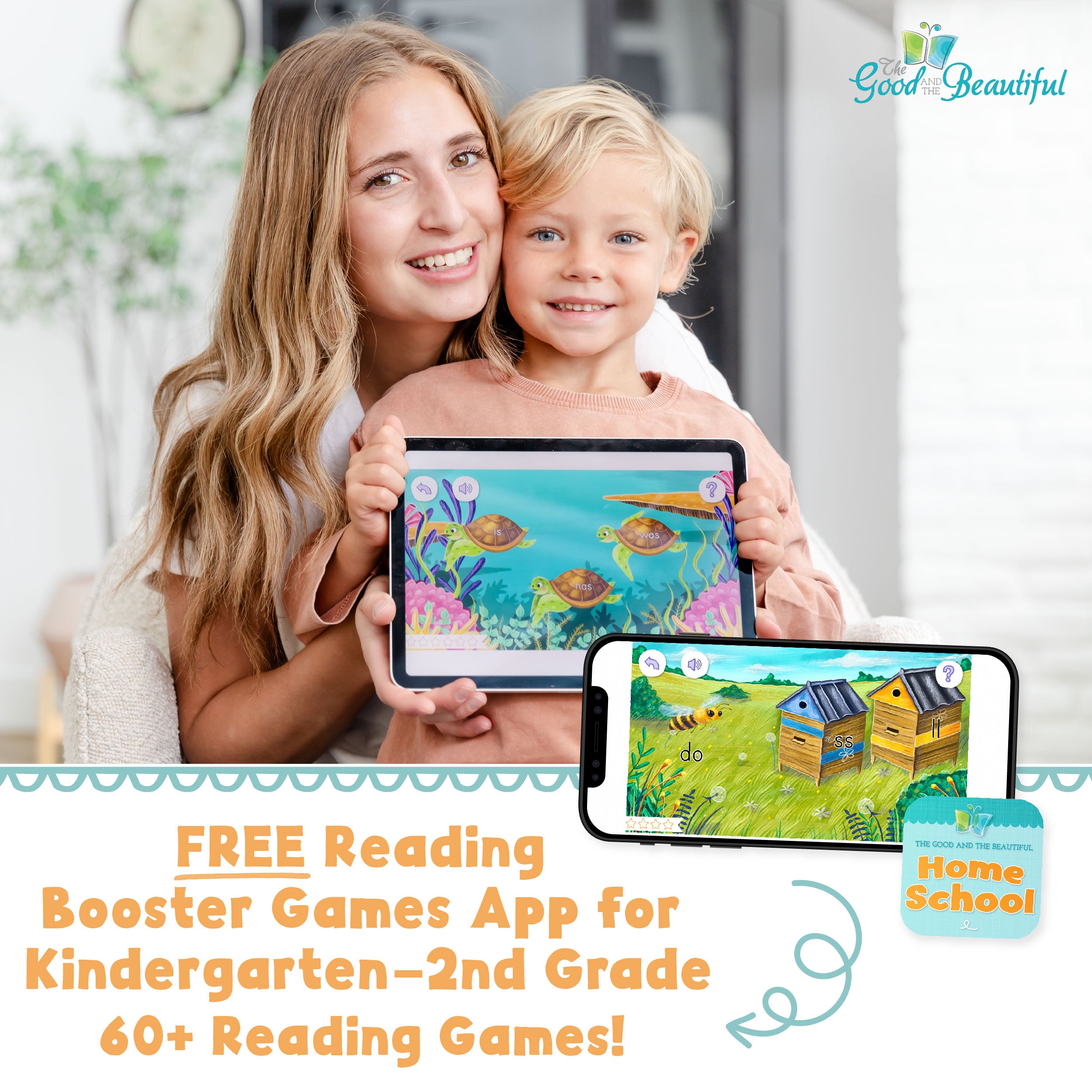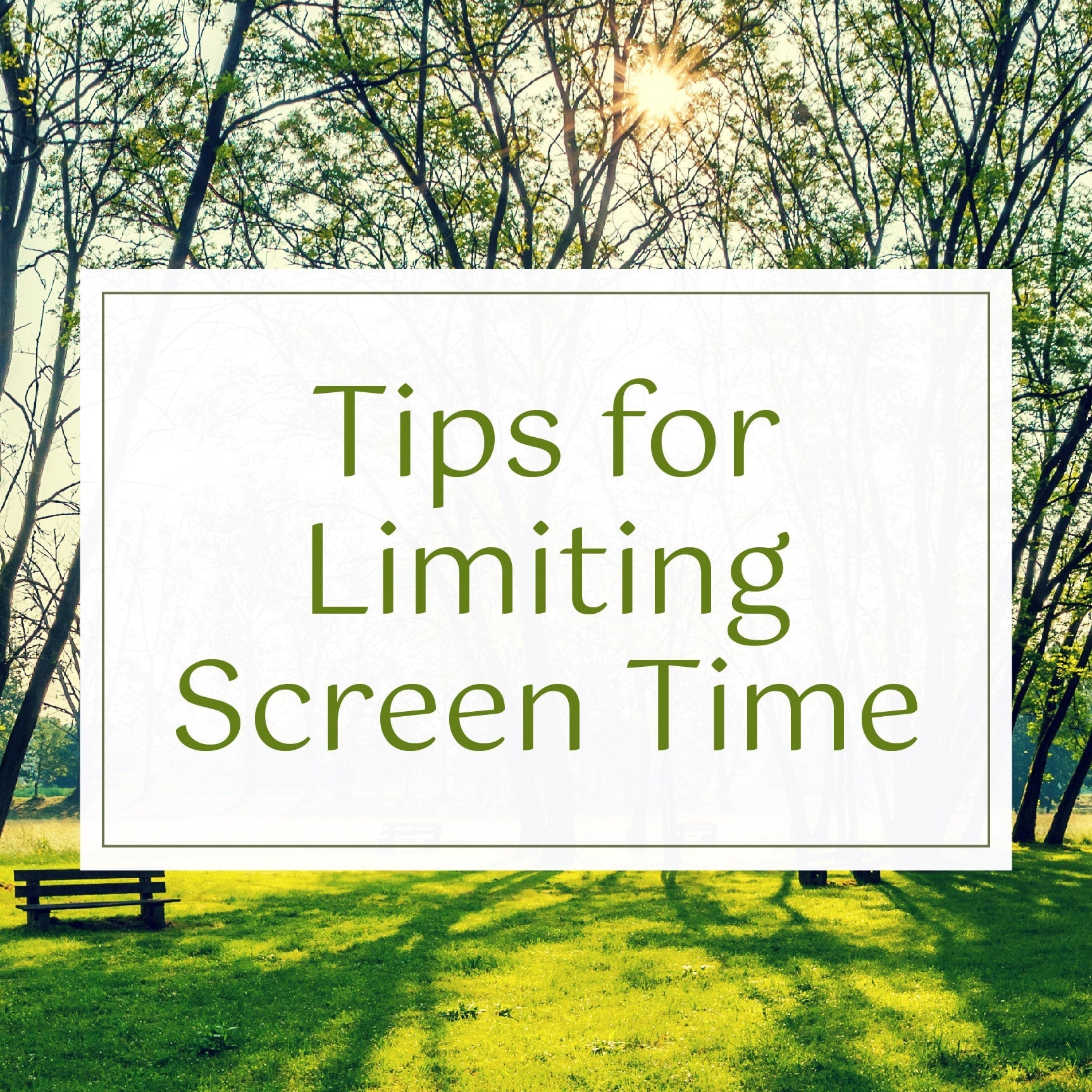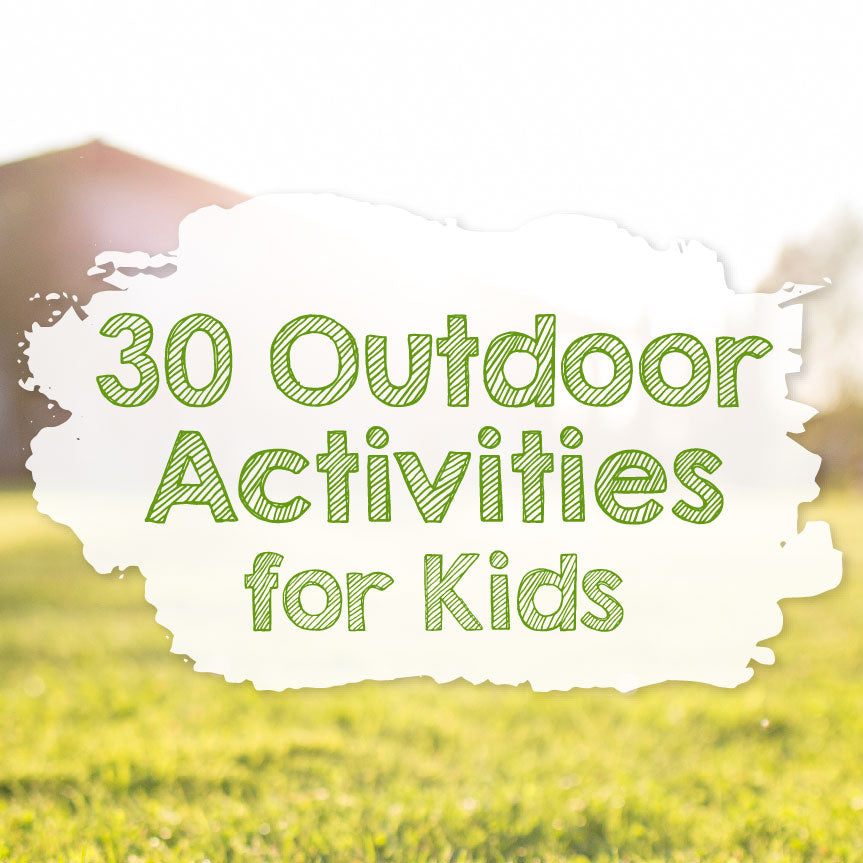
It’s easy for screens to consume your child’s time, especially during the summer months. Jenny Phillips addresses this all-too-common dilemma facing families today. Find practical screen-free tips on how to spark your child’s imagination and help him or her discover a love for nature and beautiful books during the summer and holiday breaks in this video and blog post.
-
Making Summers Screen Free
As I was walking down a school hallway once, I saw short essays on the wall written by young students describing what they love most about summer. I imagined children writing about playing in a river or building forts or making little cities in their backyard. But as I began reading one essay after another, I was disheartened. The vast majority of their papers—I would guess 90% or more—were about the video games they played and the levels they had achieved. We all know that this is not what we want for our children’s childhood.
No parent really wants their children to spend large amounts of time with video games and TV, but even the best of us parents find that happening, especially during the summer months. We know that a life full of screen games and TV is not ideal for children, and we desire something better.
Joy in Childhood
There is so much joy to be found in childhood. Beautiful things, things that children in our world are losing. They are forgetting how to play. They’re losing imagination and creativity. They’re losing a love of nature and beautiful books. They are losing good behavior and respect. And all too often, this is because of too much time with screen entertainment.
For all of us, it’s very easy to give our children an iPad or a phone or let them turn on the TV. But it can quickly become too much and start to feel out of control. Here’s the good news! It is not too hard to gain back control, no matter what your current screen-time habits are with your children. You can change things around with just a few easy steps. This can lead to a joyful summer—but these tips can be used any time of the year.
A diet of screens fundamentally changes our children. Too much time with video games and TV, while sometimes convenient, makes things so much harder for us and for our kids and can make anxiety and depression worse.
Screen Time Negatively Impacts
- Behavior
- Attention span
- Love for good things
- Capacity for empathy
- Levels of happiness
- Academic performance

How to Change Screen Time in Your Home
So how do we change it? This is the great thing. It’s actually not that hard to bring back curiosity, play, imagination, and a joyful and full childhood. It requires setting a simple plan with clear limits to screen time, and then following it consistently. But we can also provide and nurture creative opportunities for our children.
1. Set Screen Time Limits
Let’s talk about how to make a plan. First, set a limit on how much screen time a child can have on predetermined days of the week. My personal recommendation is no screen time at all for babies or toddlers, and not more than 30 minutes a day for older children. Also, it is very helpful to have days or weeks at a time with no video games or TV at all. Sometimes going completely screen-free for a long period of time is very helpful to detox from screens.
I feel that every time a child is on a screen, their ability to be creative and have fun without a screen is definitely and instantly diminished. The more screen time kids have, and the more thrilling the screen time is, the harder time you will have getting your children interested in creative play and good books. It can take weeks off of screens before you start noticing your children getting creative again. Honestly, the fewer video games and movies your children participate in, the easier your life will be.
2. No Violence or Disrespectful Content
Next, I strongly recommend no games or media that are violent in any way. This means no video games with blowing things up, cars crashing violently, or people hurting other people. All of these things really affect a child’s brain. Also, in TV and movies, watch for inappropriate behavior, disrespect, violence, and over-the-top thrilling entertainment.
For example, if kids are constantly watching YouTube videos that are clean but are packed with extravagant, thrilling material all the time, normal things such as playing with sticks and rocks and reading books, especially books of value, don’t seem so interesting to them anymore. Children are born with an innate ability to be creative, but thrilling entertainment diminishes that. If children lose the ability to entertain themselves with simple things around them, or they don’t crave being in nature or reading good books, that can be a sign that the unnatural world of thrilling video games or media has overcome the natural abilities inside of them.
3. Talk with Your Children
Next, I recommend sitting down with your children and talking about the impact that screens can have on them. Counsel together on a plan, or present a plan, and ask for their input. Approach the meeting with love, not as a stern talking-to, even if your children don’t respond well, which they probably won’t. It will make an impact. Most children will not be happy about reducing screen time. You will have a period of adjustment that probably will be hard, but the more consistent you are with sticking to your plan, the shorter that transition time will be. And it will be worth it.
-
What is Quality Screen Time?
Next, the quantity of time spent on screens is not the only thing to consider. The quality is incredibly important as well. Gentle, peaceful media full of things like nature and calming images is so much better for your child’s brain and character than bright, flashy, fast-moving, extravagant, or violent media.
We strive for this kind of media on our Good and Beautiful Kids Channel. Our videos are an example of how media can teach, inspire, uplift, and help children gain a taste for quality music. But remember that even this kind of media needs time limits. When it comes to younger children especially, time reading or singing with a parent is far superior for a child’s heart and mind than anything on a screen. -
FREE Reading Booster Games!FREE phonics and word games available on The Good and the Beautiful Homeschool app!
Sixty fun, educational reading games for Kindergarten through second grade!
*Be sure to download the most recent version of the app to access the games. It may help to delete and reinstall the app.*
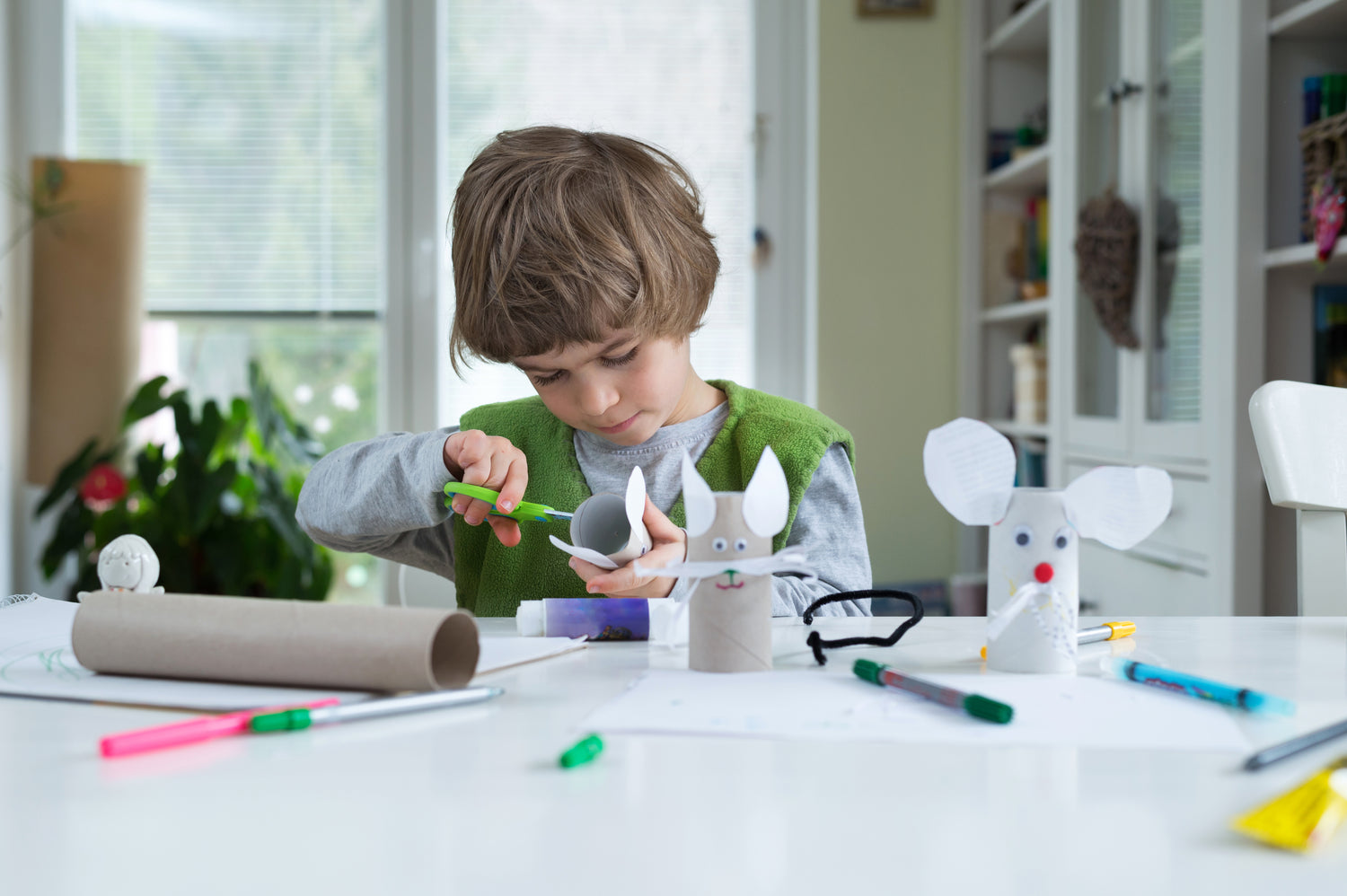
Nurture Creativity
Okay, this is the part that I love talking about: giving opportunities for and nurturing creativity in your children. One of the reasons we give our children screens is because they get so bored. So how do we fill their time with creative and good things without it becoming overly burdensome to us?
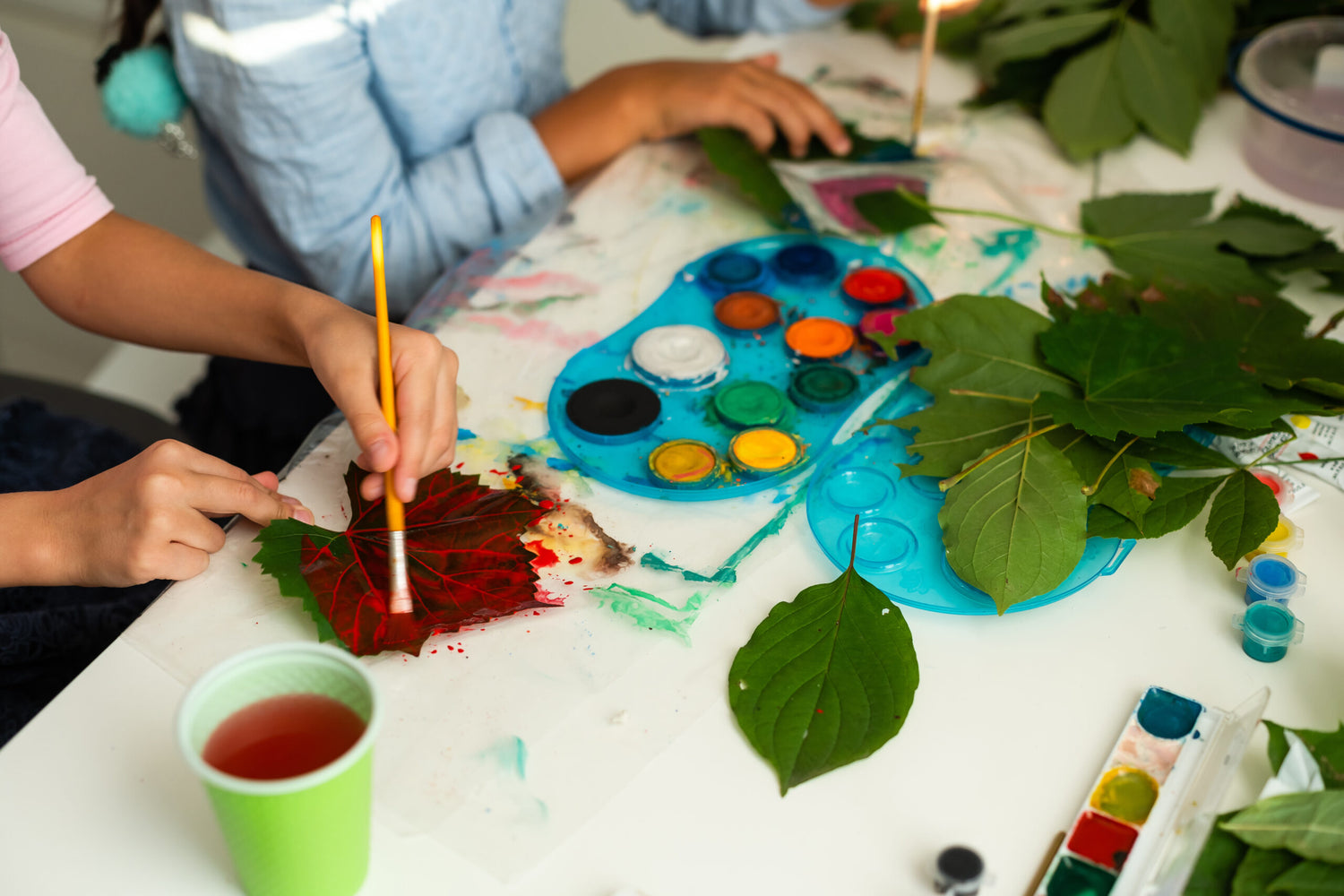
Like I said earlier, children are born with an innate ability to be creative and to notice the beautiful world around them. Children can lose some or most of their creative ability and joy in slow-paced things because of too much screen time. Reducing or eliminating screen time can help. If all you do is get rid of screens, creativity will eventually come back to your child all on its own. But if you want to nurture creativity and speed it along, here are some ideas.
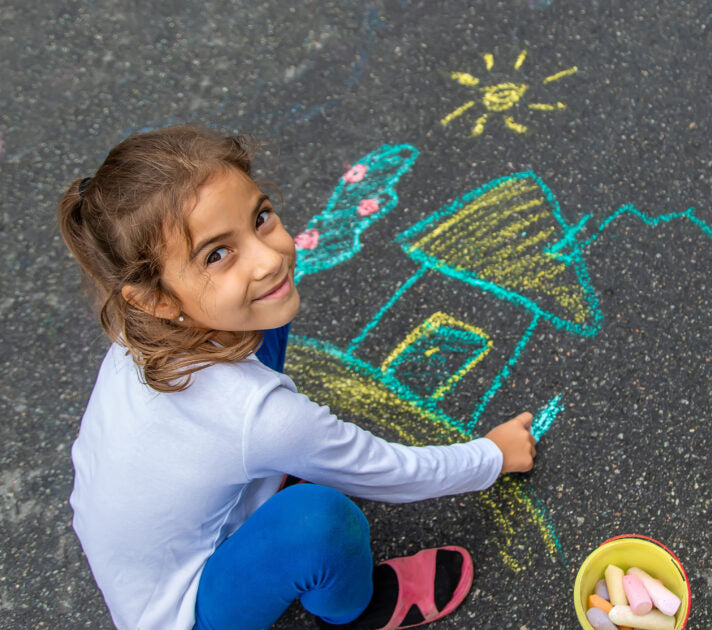
1. Provide Creative Materials
First, have creative supplies and materials easily accessible. Mitch Resnick said, “Children are deeply influenced by the toys, tools, and materials in the world around them.” The materials should be easy to reach and be organized. The materials also will be different per child. Younger children might like crayons, scissors, construction paper, feathers, little stapled booklets to create their own books with, printouts of mazes, play dough or clay, and more.

You can also provide things to have your children make little cities in the dirt or little dishes to make mud pies. Older children might like things like origami books and paper, step-by-step drawing books, paint and paint brushes, simple recipe books, herb gardening kits, and more. And don’t forget to encourage things such as bike riding and nature walks.
-
2. Model Creativity
Next, you may need to model creativity for your children. If you teach them how to paint rocks, if you find things you can make out of paper towel tubes, if you sit down and do painting tutorials with them, they are going to be much more likely to start creating things like that on their own.
My husband once gave our 5-year-old a box of tin foil and helped him make some things like a bowl and a tiny baseball bat. Our son then kept himself busy for over an hour with the tin foil, coming up with his own ideas. Several times since then, we have found our son getting out the tin foil and making fun things. He started making sculptures with other kitchen items like plates and tape and forks, all on his own accord and all because my husband modeled being creative with an ordinary item.
-
The Good and the Beautiful Creative Arts & Crafts Notebook provides fun, colorful projects for kids!
-
I have also kept my kids busy by writing a list of nature things to find in the yard or neighborhood, giving them a bag, and then having them find all of the items. After that, I found them making their own list of items to find. Charlotte Mason said, “We all have need to be trained to see, and to have our eyes opened before we can take in the joy that is meant for us in this beautiful life.”
-
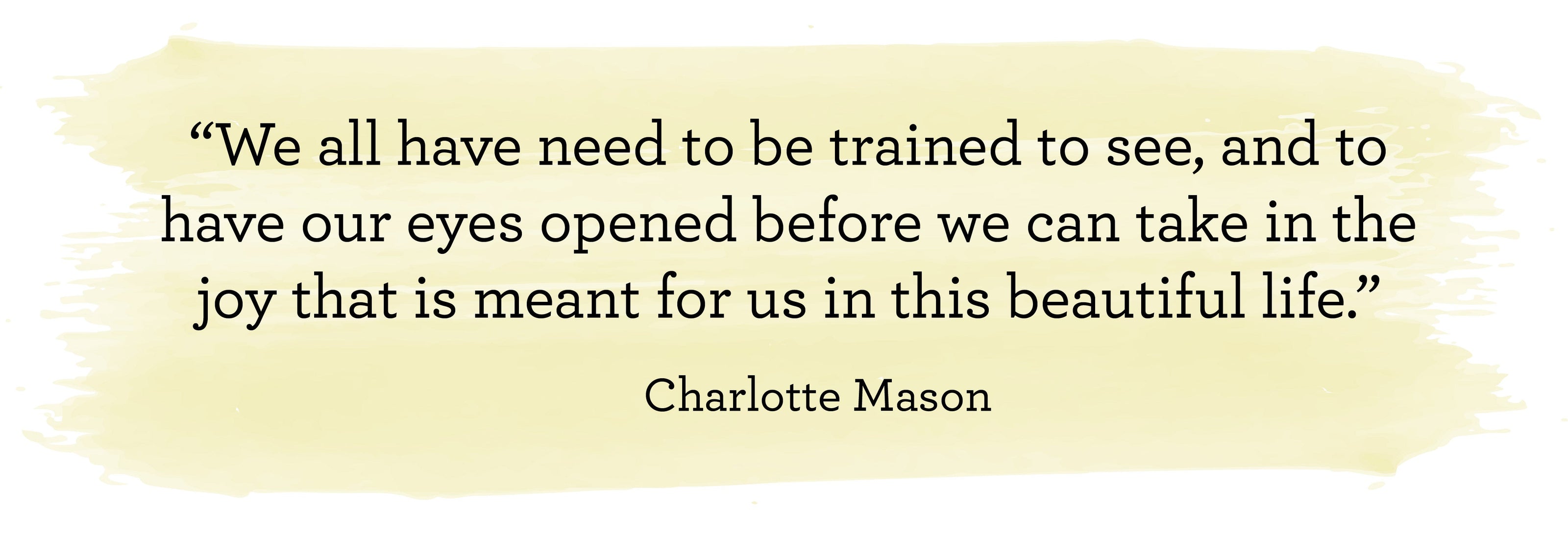
-
Read Summer Bucket List
3. Make a Bucket List
Next, sit down with your kids at the beginning of summer and make a poster board with things they want to do or learn that summer. Attach a little pouch on the poster board where they can put completed items. Then read through them all at the end of the summer. The board could include things like: learn how to braid hair, learn how to make a friendship bracelet, paint 10 pictures, learn about the planet Mars, grow a flower from a seed, or make a thank-you card for five people. Check out my blog post 100 Fun and Easy Activities for Your Summer Bucket List for more ideas.

4. Find Time for You
Next, you might be saying, “This is great, but how do I have time to keep my kids engaged in all these kinds of things?” Remember that while it is wonderful to provide materials, model creativity, and take time to do creative things with your kids, it is not your job to keep your children continually entertained. If you make an effort, you will find creative ways to do things while still having time for your duties.
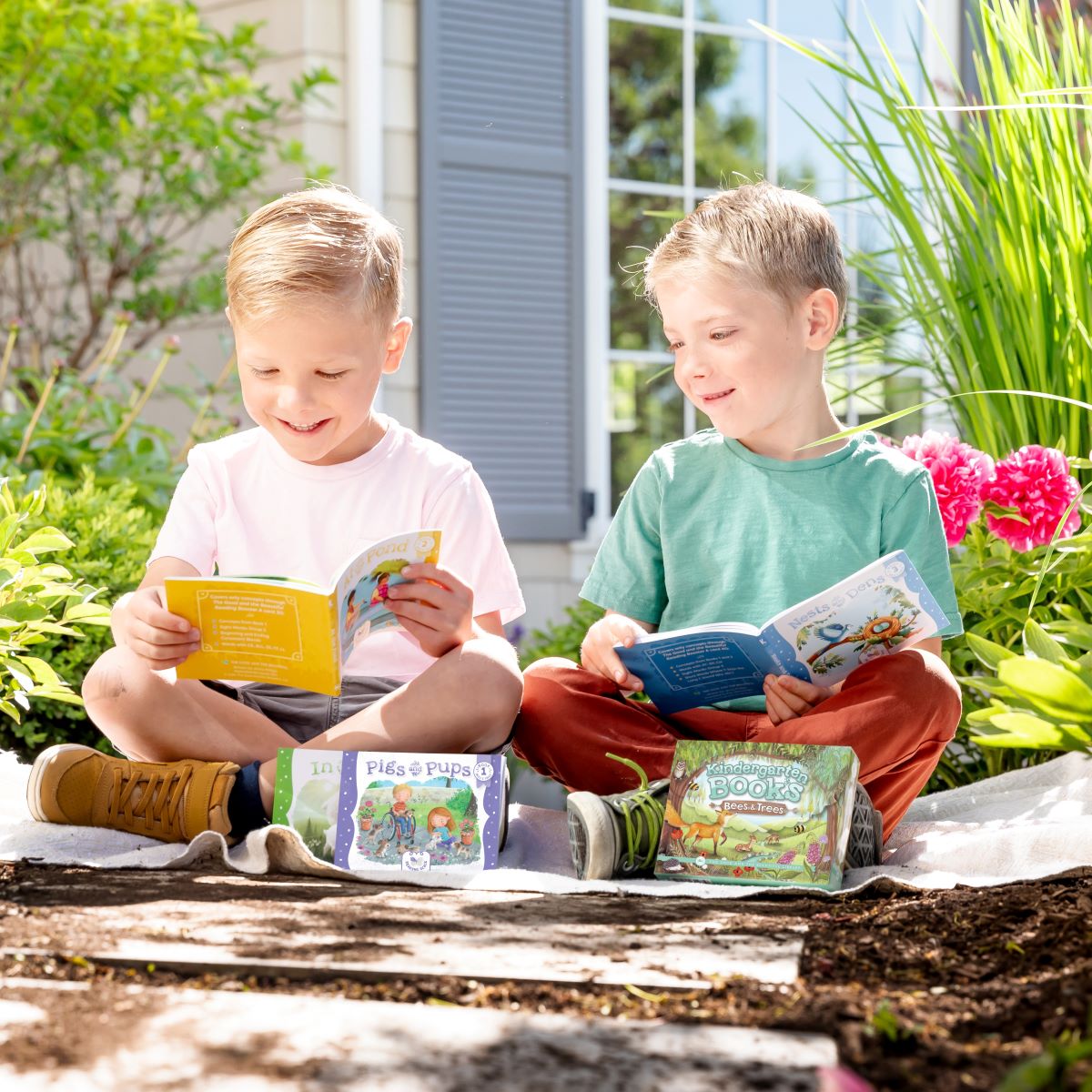
Help them get supplies and do some of the projects with them. Once your children get used to doing and thinking creative things, they will start creating on their own. For example, if you teach them how to make a pop-up card, they might just create many more on their own. Encourage your children to spend a lot of time with really good books. Suggest that they read on a blanket outside or make a fort to read in.
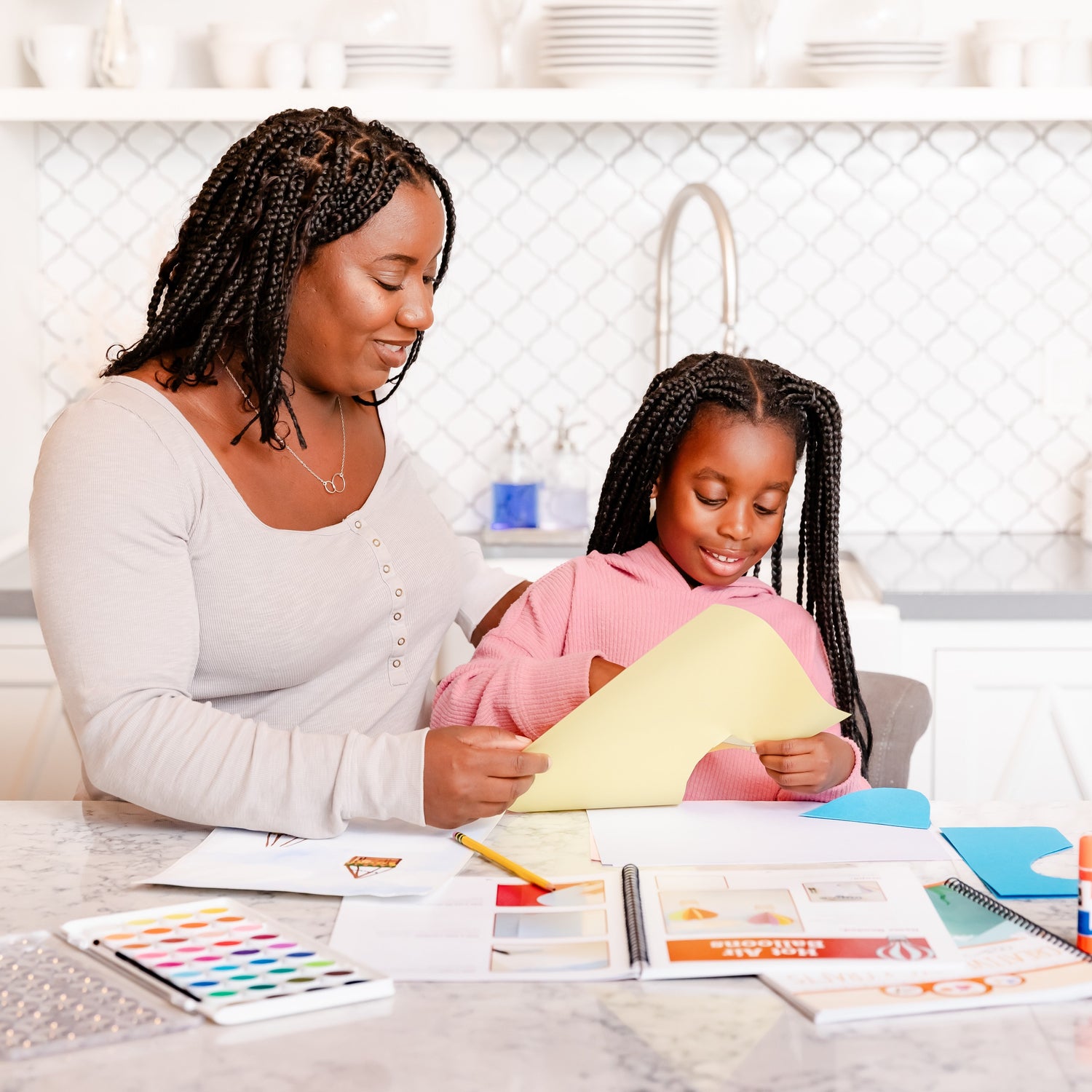
Use your own creativity to think of ways to get everything done you need to do while also nurturing your children’s creativity. If you work from home, go often to a park and work while your children play. Go to Grandma’s house and work while your children play. Have your children ride scooters with you while you go jogging, or get exercise by pulling your kids around the block in a wagon while you talk about the nature you see all around you.

Make plans with friends to host a creative playday each week that you each take turns hosting. It is important to get some quiet time and free time for yourself. See my video Quiet Time in Our Homeschool, which gives ideas you can use any time of year, whether you homeschool or not.
Key Takeaways for how to set screen time limits
- Talk with your children
- Choose good content
- Model creativity
- Provide creative alternatives

Find More Videos
It is such an incredible thing to be a part of guiding children to creativity, and it has been one of my greatest joys in life. I have so much more to say about fostering creativity in children. But I will save those other ideas for a video solely on this subject.
Be sure to subscribe so you can be notified when that video and other videos release. I’ll wrap this up by saying, try something different this summer. Expect resistance at first. Remember that the less screen time your children have, the faster they will adjust to a summer, and even a lifetime, of deeper creativity, imagination, and growth.
Be sure to subscribe so you can be notified when that video and other videos release. I’ll wrap this up by saying, try something different this summer. Expect resistance at first. Remember that the less screen time your children have, the faster they will adjust to a summer, and even a lifetime, of deeper creativity, imagination, and growth.
Find this and other inspirational and encouraging videos from Jenny Phillips on The Good and the Beautiful YouTube channel. Be sure to subscribe for the latest updates!

Related Posts
-
 1 comment
1 commentDo Kids Really Need to Learn Cursive?
Is learning cursive really necessary? You might be surprised by Jenny’s answer. In this blog post and video, she shares some of the benefits of learning cursive and how The...
1 commentDo Kids Really Need to Learn Cursive?
Is learning cursive really necessary? You might be surprised by Jenny’s answer. In this blog post and video, she shares some of the benefits of learning cursive and how The...
Read more Do Kids Really Need to Learn Cursive? -
 47 comments
47 commentsMonths of the Year
Learning the months of the year is easy with this adorable "Months of the Year" song that takes children through the changing seasons. Keep reading for fun activities to do...
47 commentsMonths of the Year
Learning the months of the year is easy with this adorable "Months of the Year" song that takes children through the changing seasons. Keep reading for fun activities to do...
Read more Months of the Year -
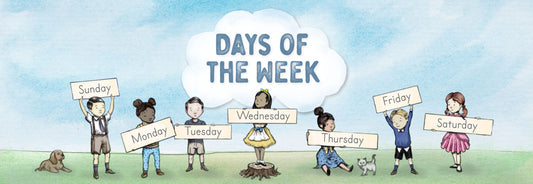 8 comments
8 commentsDays of the Week
Learning the names of the days is easy with this simple Days of the Week song from The Good and the Beautiful. Find fun ways to practice putting the days...
8 commentsDays of the Week
Learning the names of the days is easy with this simple Days of the Week song from The Good and the Beautiful. Find fun ways to practice putting the days...
Read more Days of the Week -
 26 comments
26 commentsTop 5 Tips for Homeschool Planning
Summer is the perfect time to plan ahead! In this blog post and short video, Jenny Phillips shares her top five tips for simple, yet effective planning for the next...
26 commentsTop 5 Tips for Homeschool Planning
Summer is the perfect time to plan ahead! In this blog post and short video, Jenny Phillips shares her top five tips for simple, yet effective planning for the next...
Read more Top 5 Tips for Homeschool Planning -
 3 comments
3 commentsTips for Limiting Screen Time
Technology brings a wealth of information to our fingertips, but overuse of screen time has become an issue for many families. Jenny Phillips shares her family’s journey to limiting screen...
3 commentsTips for Limiting Screen Time
Technology brings a wealth of information to our fingertips, but overuse of screen time has become an issue for many families. Jenny Phillips shares her family’s journey to limiting screen...
Read more Tips for Limiting Screen Time -
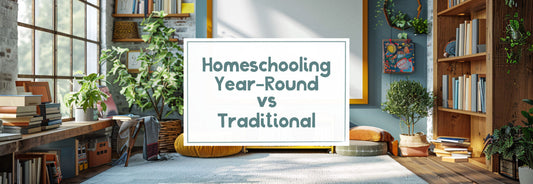 10 comments
10 commentsHomeschooling Year-Round vs Traditional
Is a traditional or year-round homeschool schedule best for your family? Watch this video from The Good and the Beautiful YouTube channel to find out some benefits and drawbacks of...
10 commentsHomeschooling Year-Round vs Traditional
Is a traditional or year-round homeschool schedule best for your family? Watch this video from The Good and the Beautiful YouTube channel to find out some benefits and drawbacks of...
Read more Homeschooling Year-Round vs Traditional -

Is Sentence Diagramming Necessary for Learning ...
Sentence diagramming can be a grammar exercise students either love or run from. Sit down with Jenny Phillips in this video and blog post as she discusses how and why...
Is Sentence Diagramming Necessary for Learning ...
Sentence diagramming can be a grammar exercise students either love or run from. Sit down with Jenny Phillips in this video and blog post as she discusses how and why...
Read more Is Sentence Diagramming Necessary for Learning Grammar? -

What Is a Solar Eclipse?
Witnessing a total solar eclipse is a once-in-a-lifetime experience for most. Learn all about total solar eclipses and how to safely view one. Then download directions for a fun solar...
What Is a Solar Eclipse?
Witnessing a total solar eclipse is a once-in-a-lifetime experience for most. Learn all about total solar eclipses and how to safely view one. Then download directions for a fun solar...
Read more What Is a Solar Eclipse? -
 2 comments
2 commentsIs The Good and the Beautiful Math Rigorous?
What is rigor in mathematics, and is Simply Good and Beautiful Math rigorous enough? A rigorous homeschool math course teaches more than just memorization of facts and steps. Keep reading...
2 commentsIs The Good and the Beautiful Math Rigorous?
What is rigor in mathematics, and is Simply Good and Beautiful Math rigorous enough? A rigorous homeschool math course teaches more than just memorization of facts and steps. Keep reading...
Read more Is The Good and the Beautiful Math Rigorous? -
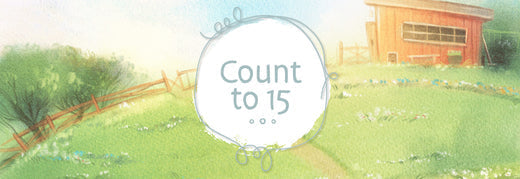
Count to 15
Teach children how to count to 15 through music and illustration with our delightful video on The Good and the Beautiful Kids Channel on YouTube. Then keep reading for more...
Count to 15
Teach children how to count to 15 through music and illustration with our delightful video on The Good and the Beautiful Kids Channel on YouTube. Then keep reading for more...
Read more Count to 15 -
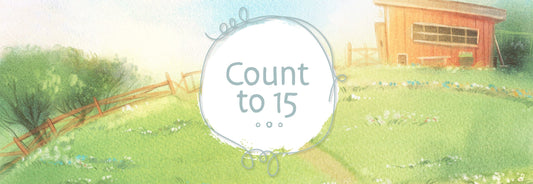
Count By 15
Teach children how to count to 15 through music and illustration with our delightful video on The Good and the Beautiful Kids Channel on YouTube. Then keep reading for more...
Count By 15
Teach children how to count to 15 through music and illustration with our delightful video on The Good and the Beautiful Kids Channel on YouTube. Then keep reading for more...
Read more Count By 15 -
 1 comment
1 commentCount by 10's
Counting by 10's is an easy pattern to introduce to children once they have mastered counting by 1's. Print the free download. Then sing along with the children in this...
1 commentCount by 10's
Counting by 10's is an easy pattern to introduce to children once they have mastered counting by 1's. Print the free download. Then sing along with the children in this...
Read more Count by 10's -
 1 comment
1 commentThe Good and the Beautiful Science: What It’s A...
Science is an important part of any homeschool education, but our team believes homeschool science curriculum should be fun and inspiring too! Our best-selling science units make science exciting to...
1 commentThe Good and the Beautiful Science: What It’s A...
Science is an important part of any homeschool education, but our team believes homeschool science curriculum should be fun and inspiring too! Our best-selling science units make science exciting to...
Read more The Good and the Beautiful Science: What It’s All About -
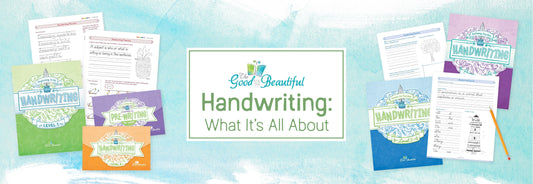
The Good and the Beautiful Handwriting: What It...
The Good and the Beautiful’s award-winning handwriting curriculum was named the most popular among homeschool families every year since 2022! When you open one of our handwriting books, you immediately notice The Good...
The Good and the Beautiful Handwriting: What It...
The Good and the Beautiful’s award-winning handwriting curriculum was named the most popular among homeschool families every year since 2022! When you open one of our handwriting books, you immediately notice The Good...
Read more The Good and the Beautiful Handwriting: What It's All About -
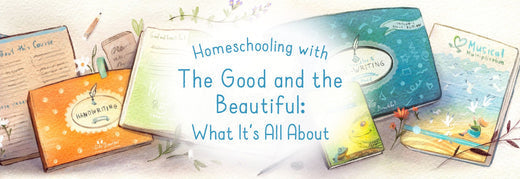 1 comment
1 commentHomeschooling with The Good and the Beautiful: ...
Once there was a homeschool mom who loved books and nature and God. She created her dream language arts curriculum for her own kids. And then she shared it for...
1 commentHomeschooling with The Good and the Beautiful: ...
Once there was a homeschool mom who loved books and nature and God. She created her dream language arts curriculum for her own kids. And then she shared it for...
Read more Homeschooling with The Good and the Beautiful: What It’s All About -
 2 comments
2 commentsSecond Grade Sight Words
Master second grade sight words! Download a free list of sight words used in The Good and the Beautiful Level 2 Language Arts and some fun sight word games for practice.
2 commentsSecond Grade Sight Words
Master second grade sight words! Download a free list of sight words used in The Good and the Beautiful Level 2 Language Arts and some fun sight word games for practice.
Read more Second Grade Sight Words -
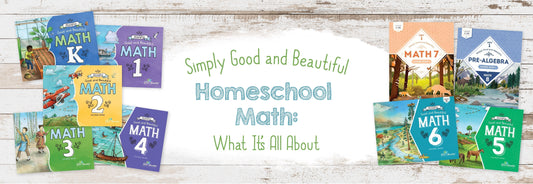
Simply Good and Beautiful Math: What It's All A...
What is Simply Good and Beautiful Math? How does it work, and what makes it different from other homeschool math curriculums? Get answers to these questions and more in an overview...
Simply Good and Beautiful Math: What It's All A...
What is Simply Good and Beautiful Math? How does it work, and what makes it different from other homeschool math curriculums? Get answers to these questions and more in an overview...
Read more Simply Good and Beautiful Math: What It's All About -

First Grade Sight Words
Learning phonics and decoding is vital for a first-grade reader. First graders benefit from learning a short list of words by sight as well. The most useful first-grade sight words...
First Grade Sight Words
Learning phonics and decoding is vital for a first-grade reader. First graders benefit from learning a short list of words by sight as well. The most useful first-grade sight words...
Read more First Grade Sight Words -

4th of July Coloring Pages
Free Printable 4th of July Coloring Pages! Enjoy these beautiful illustrations made into patriotic 4th of July coloring pages, available only from The Good and the Beautiful. Keep reading...
4th of July Coloring Pages
Free Printable 4th of July Coloring Pages! Enjoy these beautiful illustrations made into patriotic 4th of July coloring pages, available only from The Good and the Beautiful. Keep reading...
Read more 4th of July Coloring Pages




